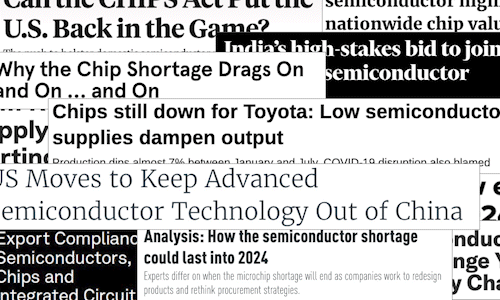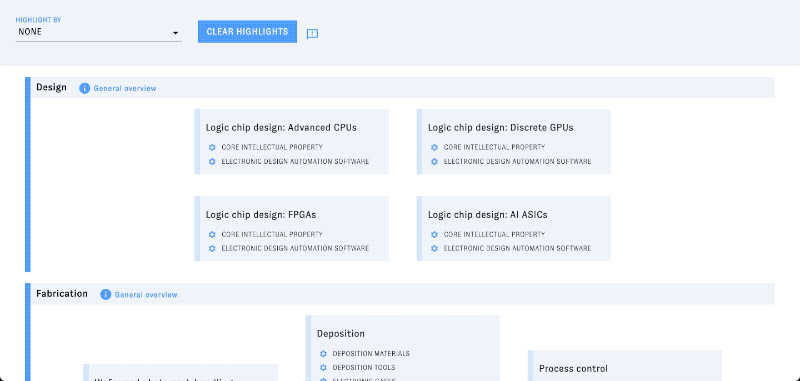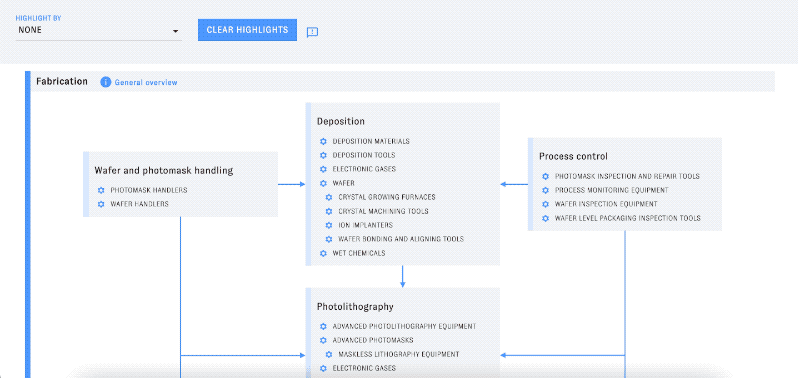The computer chip supply chain has been getting some attention lately.

Without a PhD in semiconductor engineering, getting up to speed on chips and how they’re manufactured can seem impossible. The chips themselves are deeply complicated; making them involves a seemingly endless list of inputs, materials, countries, and companies.
Still, the need to understand is urgent. Virtually every aspect of our lives depends on advanced semiconductors, and the processes and supply chains that produce them have come under increasing economic, technical and geopolitical strains. Every week brings announcements of new, chip-focused policies, R&D initiatives, and billion-dollar investments. How can policymakers and implementers, business leaders, researchers, and investors make sure these actions do more good than harm? It’s an especially tough challenge for those of us without deep expertise in the semiconductor field––that is, almost all of us.
With ETO’s Supply Chain Explorer, we’re hoping to make this challenge a little less daunting. The Explorer is an interactive, high-level visualization of the supply chain for advanced computer chips, designed to quickly orient non-experts to the essential inputs, players, and relationships involved in producing this critical resource. Building on years of rigorous, impartial CSET research on the semiconductor supply chain, our goal is to give you information you can understand, trust, and act on.

You can use the Explorer to:
- Learn about how advanced logic chips are produced and the tools, materials, and processes that are involved.
- Visually explore the chip supply chain as a series of stages and processes, each involving different tools, materials, and providers.
- Assess countries’ and companies’ role in the supply chain using the dataset’s extensive provider information.
- Identify “chokepoints”, market concentration, dependency relationships, and other structural features of the supply chain.

To get started, access the Explorer at chipexplorer.eto.tech, or get a guided tour first with the full documentation. In our next blog post on the Explorer, we’ll highlight our top takeaways from researching, developing, and using the tool.

